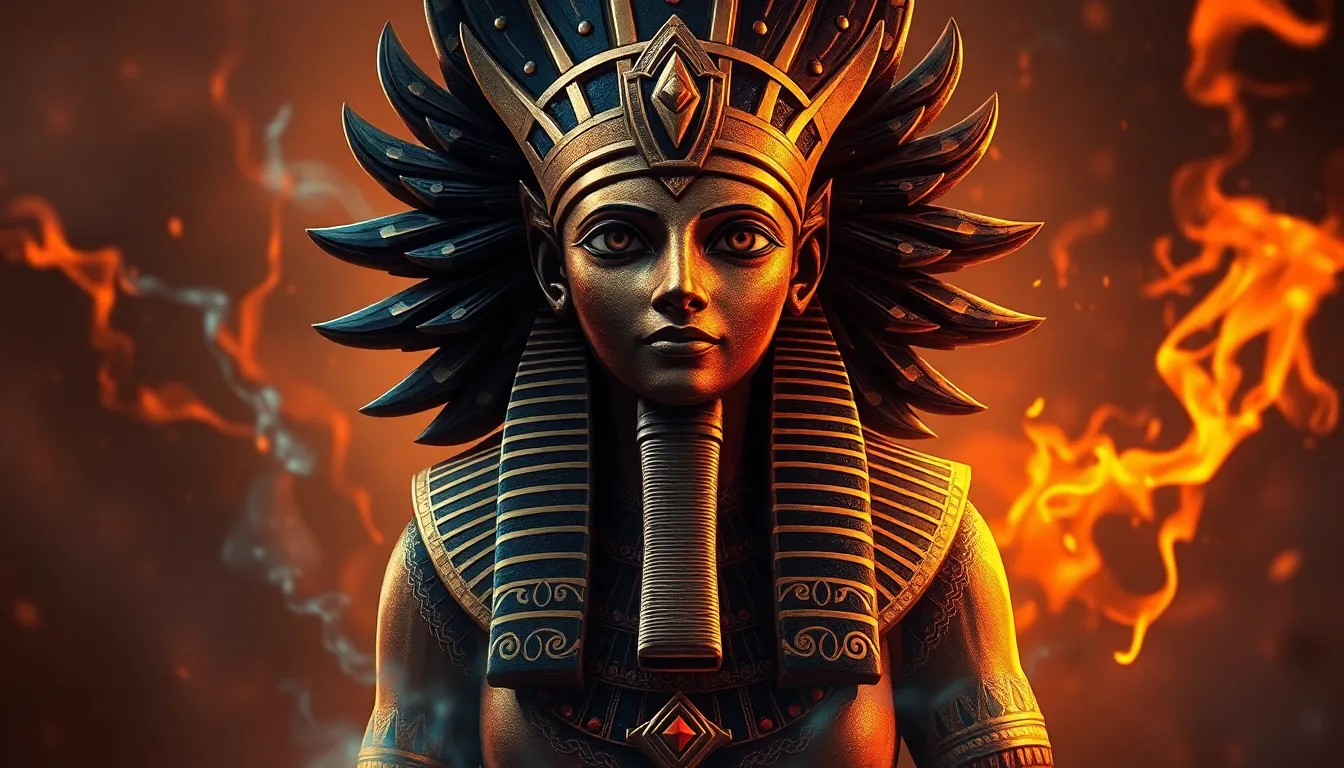The Myths of Sekhmet: The Goddess of War and Healing
I. Introduction
In ancient Egyptian mythology, Sekhmet is one of the most significant deities, embodying the dual nature of destruction and healing. She is often depicted as a lioness, symbolizing her ferocity in battle, while also being revered for her healing capabilities. This article aims to explore common myths surrounding Sekhmet, shedding light on her dual roles as both a goddess of war and a bringer of healing.
II. Historical Context of Sekhmet
Originating from the early history of ancient Egypt, Sekhmet was worshipped primarily in the city of Memphis. She was often associated with the pharaohs and was believed to protect them in battle.
The worship of Sekhmet included rituals and offerings that sought her favor and protection. Her role in Egyptian society was multifaceted, as she was both a fierce protector and a compassionate healer.
Artistic representations of Sekhmet are abundant, showcasing her lioness head and human body, often adorned with the sun disk and ankh symbol. These symbols not only represent her power but also her connection to life and regeneration.
III. The Warrior Aspect of Sekhmet
Sekhmet is often depicted in mythological stories as a fierce warrior goddess. One of the most notable myths involves her role in the creation of mankind, where she was tasked by the sun god Ra to punish humanity for their disobedience. In her wrath, she unleashed chaos upon the world, showcasing her formidable power.
The connection between Sekhmet and Ra is significant, as she is often seen as his daughter. This relationship underscores her role as a protector of the sun and a warrior against the forces of chaos.
- Sekhmet’s fierce nature is often misunderstood as pure destructiveness.
- She is depicted as a goddess who relishes in battle but ultimately serves a greater purpose in maintaining cosmic order.
IV. The Healer Goddess: Sekhmet’s Healing Powers
While Sekhmet is renowned for her warrior aspect, she is equally recognized for her healing powers. Myths highlight her ability to cure diseases and provide protection from ailments. Ancient Egyptians believed that her breath created the winds, which brought life and healing to the land.
Healing rituals dedicated to Sekhmet were common, with priests invoking her name to cure the sick. These rituals included offerings, prayers, and the use of sacred oils, believed to carry her blessings.
Her duality as both destroyer and healer illustrates a profound balance in nature, emphasizing the interconnectedness of life and death, health and illness.
V. Debunking Common Myths About Sekhmet
Many misconceptions surround Sekhmet, particularly her association with chaos and violence. It is crucial to clarify that her actions, while fierce, were aimed at restoring order rather than indiscriminate destruction.
- Sekhmet is often misrepresented as a purely malevolent figure; however, her healing aspects are equally vital to her identity.
- Modern interpretations may exaggerate her violent nature, overshadowing her role as a goddess of compassion and healing.
Understanding these nuances is essential to appreciate the complexities of her character in ancient Egyptian beliefs.
VI. Sekhmet in Popular Culture
In contemporary media and literature, Sekhmet has been portrayed in various ways, from fierce warrior to compassionate healer. These representations contribute to the ongoing fascination with her character and the broader context of Egyptian mythology.
Contemporary narratives often reshape the perception of Sekhmet, emphasizing themes of empowerment and resilience. Books, films, and art continue to draw inspiration from her duality, reflecting both her strength and nurturing aspects.
VII. The Symbolism of Sekhmet Today
Today, the myths of Sekhmet resonate with discussions on femininity and power. As a goddess who embodies both destruction and healing, Sekhmet serves as a symbol of resilience for many modern spiritual practices.
Her duality offers valuable lessons for contemporary society, emphasizing the importance of balance in life. The ability to harness one’s strength while nurturing others is a powerful message that transcends time.
VIII. Conclusion
In summary, Sekhmet’s myths encapsulate the complexities of life, embodying the dual nature of destruction and healing. Her legacy endures in both ancient and modern contexts, reminding us of the balance required in our lives.
As we explore the rich tapestry of Egyptian mythology, Sekhmet stands out as a powerful figure whose stories continue to inspire and teach valuable lessons about strength and compassion. Further exploration into the intricate world of Egyptian deities will reveal even more about their significance and the wisdom they offer.




